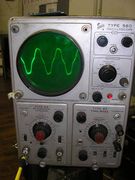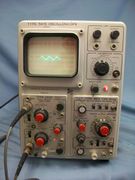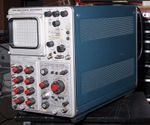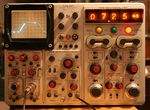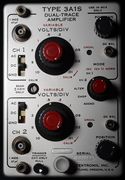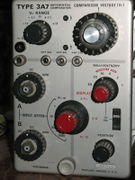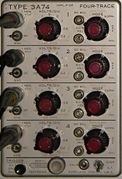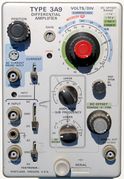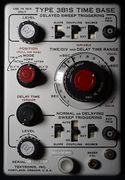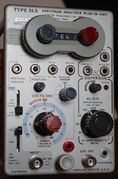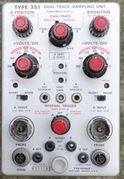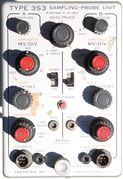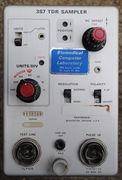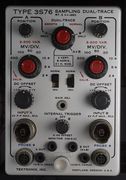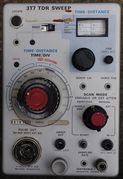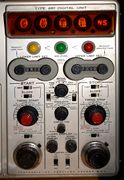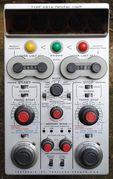560-series scopes: Difference between revisions
(formatting, years) |
(larger thumbnails; introduction abridged (full text in 560 article)) |
||
| Line 1: | Line 1: | ||
The 560 series scopes which were introduced with the [[560]] and [[561]] in 1961 were tube scopes that began to introduce some solid state circuitry. | The 560 series scopes which were introduced with the [[560]] and [[561]] in 1961 were tube scopes that began to introduce some solid state circuitry. They use [[2-series or 3-series vertical plug-ins]] and [[2-series or 3-series horizontal plug-ins]] (exception: [[560]] only takes 2-series because of weak power supply). | ||
560-series mainframes contain neither delay lines nor amplifier stages, requiring the plug-ins to drive the CRT deflection plates directly, | |||
at the disadvantage of needing to calibrate gain or sweep when swapping plug-ins. | |||
560-series mainframes contain | |||
the CRT deflection plates directly | |||
swapping plug-ins | |||
==560 series scopes== | ==560 series scopes== | ||
<gallery> | <gallery widths="150" heights="180"> | ||
File:Tek 560 1.jpeg | '''[[560|560 - Basic mainframe]]''' (1961) | File:Tek 560 1.jpeg | '''[[560|560 - Basic mainframe]]''' (1961) | ||
File:Tek 561s.jpg | '''[[561]]''' (1961) | File:Tek 561s.jpg | '''[[561]]''' (1961) | ||
| Line 32: | Line 16: | ||
==560 series plugins== | ==560 series plugins== | ||
<gallery> | <gallery widths="150" heights="180"> | ||
File:Tek 3a1s.jpg | '''[[3A1S]]''' - 25 MHz vertical amplifier (1961) | File:Tek 3a1s.jpg | '''[[3A1S]]''' - 25 MHz vertical amplifier (1961) | ||
File:Tek 3a7 1.JPG | '''[[3A7]]''' - differential amplifier | File:Tek 3a7 1.JPG | '''[[3A7]]''' - differential amplifier | ||
Revision as of 06:54, 18 August 2014
The 560 series scopes which were introduced with the 560 and 561 in 1961 were tube scopes that began to introduce some solid state circuitry. They use 2-series or 3-series vertical plug-ins and 2-series or 3-series horizontal plug-ins (exception: 560 only takes 2-series because of weak power supply).
560-series mainframes contain neither delay lines nor amplifier stages, requiring the plug-ins to drive the CRT deflection plates directly, at the disadvantage of needing to calibrate gain or sweep when swapping plug-ins.
560 series scopes
-
560 - Basic mainframe (1961)
-
561 (1961)
-
561A (1962)
-
564 - Storage scope (1962)
-
565 - dual-beam scope, two plug-ins; built-in trigger, sweep, and horizontal amplifier]] (1963)
-
568 - Sampling scope (1967)
560 series plugins
-
3A1S - 25 MHz vertical amplifier (1961)
-
3A7 - differential amplifier
-
3A74 - four-channel vertical plug-in (1963)
-
3A9 - 1 MHz differential amplifier (1969)
-
3B1S - timebase plug-in (1961)
-
3L5 - 1 MHz spectrum analyzer
-
3S1 - dual-trace sampling plug-in
-
3S3 - sampling plug-in
-
3S7 - sampling plug-in (1971)
-
3S76 - dual-trace sampling plug-in
-
3T7 - sampling timebase and pulser (1971)
